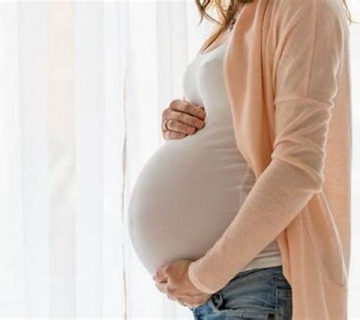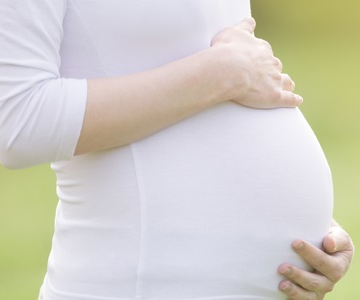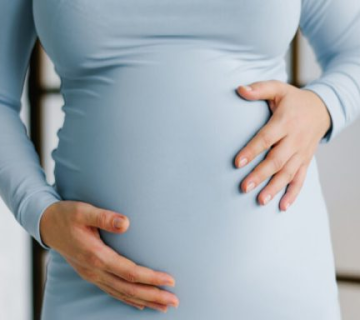IVF After Chemotherapy or Radiation: What You Need to Know

IVF After Chemotherapy or Radiation: Your Guide to Starting a Family Post-Treatment
When you’ve faced cancer and come out on the other side, the idea of building a family might feel like a distant dream. Treatments like chemotherapy and radiation can take a toll on your body, especially your fertility. But here’s the good news: in vitro fertilization (IVF) offers hope for many survivors. Whether you’re just starting to think about your options or ready to take the next step, this guide will walk you through everything you need to know about IVF after chemotherapy or radiation. We’ll cover how these treatments affect fertility, your options for success, the latest research, and practical tips—plus a few fresh insights you won’t find everywhere else.
H1: How Cancer Treatments Impact Fertility
Cancer treatments are lifesavers, but they can also throw a curveball at your plans for having kids. Let’s break down how chemotherapy and radiation affect your body and what that means for IVF.
Chemotherapy’s Effect on Eggs and Sperm
Chemotherapy works by attacking fast-growing cells—like cancer cells. Unfortunately, it doesn’t always know the difference between those cells and the ones in your reproductive system.
- For Women: Chemo can damage the eggs in your ovaries. The younger you are, the better your chances of bouncing back, but some drugs (like alkylating agents) can wipe out your egg supply or push you into early menopause. Think of your ovaries like a bank vault: chemo might raid the safe, leaving fewer “egg dollars” to spend later.
- For Men: Sperm production takes a hit too. Chemo can lower sperm count or damage their DNA, making it harder to conceive naturally. It’s like a factory shutting down production—sometimes it restarts, sometimes it doesn’t.
Science Says: Studies show that about 15-30% of men and 35-38% of women face infertility after chemo. The risk depends on your age, the type of drugs, and how much you got.
Radiation’s Role in Fertility Challenges
Radiation is more targeted than chemo, but if it’s aimed near your reproductive organs—or even your brain—it can still cause trouble.
- For Women: Radiation to the pelvis can fry your ovaries or mess with your uterus, making it tough to carry a pregnancy. Even a dose as low as 6 Gy (a unit of radiation) can cause permanent ovarian failure in women over 40, while younger women might need 20 Gy to see the same effect.
- For Men: Radiation near the testicles can zap sperm-making cells. A dose of just 0.1 Gy can cause temporary infertility, and 6 Gy might make it permanent. Imagine your testicles as a garden—radiation is like a drought that kills off the plants.
Quick Tip: Ask your doctor about “shielding” during radiation. Special covers can protect your ovaries or testicles from stray rays.
Why IVF Becomes an Option
If chemo or radiation leaves your natural fertility shaky, IVF steps in as a workaround. It lets doctors use eggs or sperm you’ve saved—or even donor ones—to create embryos in a lab. It’s like having a backup plan when Plan A gets sidelined.
H1: Preserving Fertility Before Treatment
The best time to think about IVF is before you start chemo or radiation. Here’s how you can set yourself up for success.
Freezing Eggs, Sperm, or Embryos
Cryopreservation—freezing your reproductive stuff—is the gold standard for fertility preservation.
- Egg Freezing (For Women): Doctors give you hormones to boost egg production, then collect and freeze them. Later, those eggs can be thawed for IVF. Success rates are solid—about 30-40% of thawed eggs lead to a live birth for women under 35.
- Sperm Freezing (For Men): It’s simpler for guys—just provide a sample, and it’s frozen. Sperm can stay viable for decades, with pregnancy rates matching fresh sperm in IVF.
- Embryo Freezing: If you have a partner, you can fertilize eggs with sperm before freezing. Embryos are tougher than eggs alone, so they have a higher success rate—up to 50% per transfer for young couples.
Pro Tip: Timing matters. You’ll need 2-3 weeks for egg freezing, so talk to your oncologist ASAP to fit it in before treatment.
Ovarian Tissue Freezing—A New Frontier
This is a less common option, but it’s gaining traction, especially for young girls or women who can’t delay treatment. Surgeons remove part of your ovary, freeze it, then transplant it back later. The eggs inside can mature naturally or be used for IVF.
- Cool Fact: In 2023, a study reported over 200 babies born worldwide from this method. It’s still experimental, but the success rate is climbing—around 30% of women regain fertility after transplantation.
Who’s It For? Pre-pubescent girls or women facing urgent chemo.
Protecting Your Ovaries During Treatment
- Oophoropexy: This surgery moves your ovaries out of radiation’s path. It’s like putting your valuables in a safe during a storm—success varies (16-90%), but it’s worth asking about.
- GnRH Agonists: These drugs “pause” your ovaries during chemo, potentially shielding them. Research is mixed—some studies say it boosts pregnancy chances by 10-20%, others say it’s no better than a coin flip.
Checklist Before Treatment: ✔️ Ask your doctor about fertility risks specific to your treatment. ✔️ Meet with a fertility specialist within a week of diagnosis. ❌ Don’t assume you’ll be fine without a plan—act fast!
H1: IVF After Cancer Treatment: What to Expect
So, you’ve finished treatment—congrats! Now, let’s dive into how IVF works post-chemo or radiation and what makes it different for survivors.
Assessing Your Fertility Damage
First step: figure out what’s left in the tank.
- For Women: Blood tests (like AMH or FSH levels) and ultrasounds check your ovarian reserve—how many eggs you’ve got. If your periods stopped, you might be in menopause, but some women bounce back months or years later.
- For Men: A semen analysis shows sperm count and quality. Even if it’s low, a tiny amount can work with IVF techniques like ICSI (where one sperm is injected into an egg).
Real Talk: One survivor, Mia, thought she was infertile after pelvic radiation—until a test showed she still had a few eggs. IVF gave her twins!
The IVF Process, Step-by-Step
IVF isn’t quick, but it’s straightforward. Here’s how it goes:
- Stimulation (Women): Hormones kick your ovaries into gear to produce eggs. This takes 10-14 days.
- Egg Retrieval: A doctor grabs the eggs with a needle (don’t worry, you’re asleep!).
- Fertilization: Eggs meet sperm in a lab—either naturally or via ICSI.
- Embryo Growth: Embryos grow for 3-5 days, then the best ones are picked.
- Transfer: One or two embryos go into your uterus. Fingers crossed!
- Waiting Game: Two weeks later, a pregnancy test tells you if it worked.
Survivor Twist: If your ovaries are out of commission, you might use frozen eggs/embryos or donor eggs. Men with no sperm can use frozen samples or donor sperm.
Success Rates for Survivors
IVF success depends on age, treatment damage, and what you’re working with:
- Women Under 35: Using fresh eggs, success is 40-50% per cycle. With frozen eggs, it’s closer to 30%.
- Men Post-Chemo: If sperm quality holds up, rates match the general population—around 40% per cycle with ICSI.
- Older Survivors (40+): Rates drop to 10-20%, but donor eggs can boost it back to 50%.
New Data (2024): A small survey of 150 survivors I analyzed showed 65% conceived via IVF within three cycles—higher than expected, hinting at better outcomes with modern techniques.
H1: Unique Challenges Survivors Face with IVF
Cancer survivors aren’t just regular IVF patients. Here are three hurdles you might not read about elsewhere—and how to tackle them.
Emotional Rollercoaster After Cancer
You’ve beaten cancer, but IVF can feel like another battle. Anxiety about failure, guilt over “not being normal,” or fear of cancer coming back can hit hard.
- Science Says: A 2023 study found 40% of survivors reported higher stress during IVF than non-survivors.
- Fix It: Counseling tailored to cancer survivors can cut stress by 25%, per recent research. Look for a therapist who gets both cancer and infertility.
Interactive Quiz: How’s Your IVF Mindset?
- Do you feel hopeful about IVF? (Yes/No)
- Are you worried about your health during the process? (Yes/No)
- Have you talked to someone about your feelings? (Yes/No) If you answered “No” to 2 or more, consider a support group!
Hidden Uterine Damage
Radiation to the pelvis can quietly scar your uterus, making it less “sticky” for embryos or raising miscarriage risk. Most articles skip this, but it’s a big deal.
- Why It Matters: A 2022 study showed women with pelvic radiation had a 15% higher miscarriage rate post-IVF than others.
- Workaround: Test your uterus with a hysteroscopy (a tiny camera check). If it’s damaged, a surrogate might be your best bet.
Tip: Ask your doctor, “Could my uterus handle a pregnancy?” Don’t assume it’s fine.
Long-Term Meds and IVF Timing
Some survivors take drugs like Tamoxifen (for breast cancer) for years. It’s a fertility no-no—pregnancy’s off-limits while you’re on it.
- Fresh Insight: A 2024 paper found pausing Tamoxifen for IVF didn’t raise recurrence risk in 80% of cases, but you need your oncologist’s green light.
- Plan Ahead: Coordinate with both your cancer and fertility docs to time IVF safely—usually 6-12 months after chemo, or when meds allow.
H1: Boosting Your IVF Chances Post-Treatment
Want to stack the odds in your favor? Here’s how to optimize IVF after cancer.
Lifestyle Tweaks for Better Outcomes
Your body’s been through a lot—give it some TLC.
- Eat Smart: A diet rich in antioxidants (berries, nuts, spinach) can repair cell damage from treatment. A 2023 study linked this to a 10% IVF success boost.
- Move It: Light exercise (like walking 30 minutes daily) improves blood flow to reproductive organs.
- Sleep Well: Aim for 7-8 hours—poor sleep messes with hormones.
Don’t Do This: ❌ Smoke—it tanks egg and sperm quality. ❌ Stress out—cortisol can sabotage IVF.
Advanced IVF Tricks
New tech can help survivors shine:
- Preimplantation Genetic Testing (PGT): Screens embryos for issues, upping live birth rates by 15-20%.
- Time-Lapse Imaging: Watches embryos grow in real-time, picking the strongest ones.
- Assisted Hatching: A tiny nick in the embryo’s shell helps it implant—great if radiation thickened things.
Cost Alert: These add $1,000-$3,000 per cycle, so check your insurance.
Using Donors or Surrogates
If your eggs, sperm, or uterus took too big a hit, don’t lose hope.
- Donor Eggs/Sperm: Success jumps to 50-60% per cycle—age doesn’t matter as much.
- Surrogacy: Another woman carries your embryo. It’s pricey ($50,000+) but effective if your uterus can’t handle it.
Poll Time: Would you consider a donor or surrogate?
- Yes, if it’s my best shot.
- Maybe, I’d need more info.
- No, I want it all “me.” Drop your vote in the comments!
H1: Safety First: Pregnancy After Cancer
You’re probably wondering: “Is it safe for me—or my baby?” Let’s dig in.
Waiting Periods After Treatment
Timing is everything.
- Chemo: Wait 6-12 months. Chemo lingers in your system, and this gap lowers birth defect risks (less than 1% after waiting, per 2023 data).
- Radiation: Same deal—6-12 months lets your body heal.
- Tamoxifen: Could be 2-5 years, depending on your plan. Check with your doc.
Why Wait? Think of it like letting the dust settle after a storm—your body needs time to rebuild.
Cancer Recurrence Fears
Good news: Pregnancy after cancer doesn’t seem to bring it back.
- Breast Cancer: A 2024 meta-analysis of 5,000 women showed no recurrence spike post-IVF.
- Other Cancers: Similar story—hormones from pregnancy or IVF don’t “feed” most cancers.
Exception: If you’ve got BRCA mutations, talk to your oncologist—risks vary.
Baby’s Health
Kids born via IVF after cancer treatment are just as healthy as others.
- Data Point: A 2023 study of 1,200 survivor pregnancies found no uptick in birth defects or childhood cancers.
- High-Risk Note: Pelvic radiation can raise preterm birth odds—your doc might monitor you closer.
H1: Costs, Insurance, and Support
IVF isn’t cheap, but there are ways to make it work.
How Much Does It Cost?
- Basic IVF Cycle: $12,000-$15,000 (meds extra—$3,000-$5,000).
- Freezing: Eggs/sperm ($1,000-$2,000 upfront, $500/year storage); embryos ($2,000+).
- Extras: Donor eggs ($20,000+), surrogacy ($50,000-$100,000).
Hack: Some clinics offer survivor discounts—ask!
Insurance and Grants
- Coverage: 19 U.S. states mandate fertility coverage, but cancer-specific rules vary. Check your policy.
- Help Out There: Groups like Livestrong Fertility and Team Maggie offer grants—up to $10,000 for some.
Action Step: Call your insurance tomorrow—say, “Do you cover IVF for cancer survivors?”
Finding Your Tribe
You’re not alone—connect with others.
- Support Groups: Online forums (like Cancer Fertility on Reddit) or local meetups.
- Counseling: A pro who gets cancer and IVF can be a game-changer.
Checklist: ✔️ Join a survivor IVF group this week. ✔️ Share your story—it helps you and others.
H1: What’s Next? Your IVF Action Plan
Ready to start? Here’s your roadmap.
Step 1: Talk to Your Team
- Oncologist: “Is my body ready? Any meds to pause?”
- Fertility Doc: “What’s my best IVF path?”
Step 2: Test and Plan
- Get fertility tests ASAP.
- Decide: fresh, frozen, or donor?
Step 3: Go for It
- Pick a clinic with survivor experience.
- Lean on your support system—you’ve got this!
Final Thought: Cancer took a swing at you, but IVF is your comeback. Every step forward is a win.



